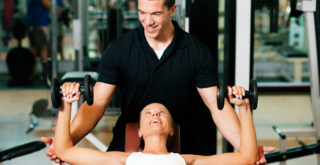Why the yoga handstand? What is the fascination? Whether you want to excel at yoga, strength training, or flexibility, there are many different hurdles that you need to overcome in order to achieve your goals. The following is one of the best ways to help you to master your goals; by achieving the yoga handstand provided you’re ready to do the pose with proper form.
Why the Yoga Handstand?
The yoga handstand is often one of the most frequently sought-after goals in yoga because it is unique, relatively well known, and takes a good amount of strength, flexibility, and skill. It looks impressive and it is clearly challenging, making it something many of us aim to accomplish as we take on yoga at a more serious level.
That said, this is not considered to be a beginner move. Just because you’ve been doing beginner yoga for a couple of weeks, it doesn’t necessarily mean that you’re ready for a handstand. If you are already very physically fit and your balance is good, then you may be physically prepared to give it a try. That said, for the average person, it will take a bit of building before you are ready to take your feet off the floor and see the world upside down.
Are You Ready for a Yoga Handstand?
The first thing that you need to do is to make sure that you are strong enough to achieve the pose. It is, after all, something you need to build up to. Fortunately, there are certain ways for you to test your strength and balance before diving into the move. For the sake of your safety and wellbeing, be sure to use these methods to gauge your readiness before getting started with your first attempts at a yoga handstand.
By making this effort, you will decrease your risk of inadvertently injuring yourself. Remember that injury isn’t just a risk from tipping over and striking something. This is a very specific move that is held. Therefore, if you have not yet strengthened and aligned the necessary parts of your body, you risk pulling, tearing or otherwise injuring muscles, tendons or ligaments. You could also suffer joint damage if your joints are not yet properly supported by the muscles, tendons or ligaments surrounding them.
Test Yourself in Advance
One good test to be sure that you are ready is to try to hold the inverted V “downward facing dog” pose for five minutes. If you can do that, follow the instructions for a handstand only when a teacher is present so that you can be sure that you aren’t placing an excessive amount of weight on your neck and head. You should have adequate shoulder and core strength as well as neck strength and balance to keep up this pose without excessive discomfort and in the proper form.
If you can do this, you may be ready to try a yoga handstand for a short period of time and potentially in a simplified way at the start.
How to Achieve the Pose
Once this is the case, use the following steps:
- Face the wall, crouch down, and rest the crown of your heat onto a yoga mat that is butted up against the wall. Clasp your fingers behind your head so that your knuckles touch the wall and your forearms provide balance by sticking out slightly and touching the floor. Walk your feet toward your head, allowing your hips to rise, then bring one knee to your chest, hold it for five seconds, then rest it down. Repeat this a few times with each knee and rest in the child’s position. Fold your body over your thighs while kneeling on the mat and press your forehead to the mat. Once you reach the point that your spine is not rounded and there isn’t any pressure on your neck, move on to the next step.
- Returning to the same beginning position, bring your first knee to your chest and then the second so that you are in a fetal position and your feet have been raised off the mat. Your back should be against the wall with your body in a little ball position. Hold this for a count of five and return to the child’s position to rest. Once this becomes easy to achieve, you’re ready for the next step.
- From the balled-up position, begin to extend one of your legs up the wall and then use the other. Keep your legs pressed together and allow just your heels to touch the wall. Keep your hamstrings and buttocks from touching the wall. Draw your shoulder blades toward each other and avoid the inclination to allow your spine to round. The stronger you become, the more ready you will be to draw one leg and then both away from the wall so that you are balancing in a yoga handstand on your own.



















